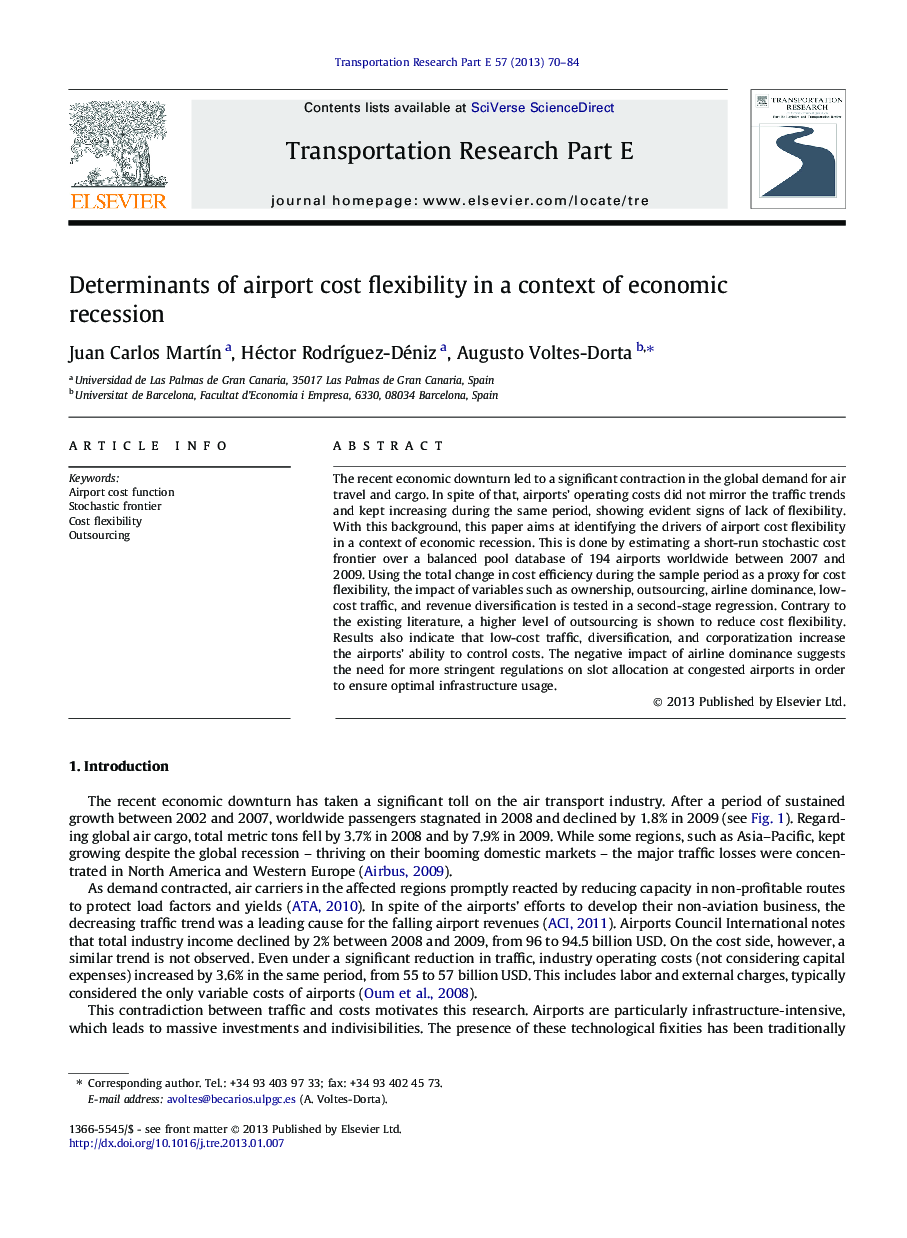| Article ID | Journal | Published Year | Pages | File Type |
|---|---|---|---|---|
| 1023418 | Transportation Research Part E: Logistics and Transportation Review | 2013 | 15 Pages |
The recent economic downturn led to a significant contraction in the global demand for air travel and cargo. In spite of that, airports’ operating costs did not mirror the traffic trends and kept increasing during the same period, showing evident signs of lack of flexibility. With this background, this paper aims at identifying the drivers of airport cost flexibility in a context of economic recession. This is done by estimating a short-run stochastic cost frontier over a balanced pool database of 194 airports worldwide between 2007 and 2009. Using the total change in cost efficiency during the sample period as a proxy for cost flexibility, the impact of variables such as ownership, outsourcing, airline dominance, low-cost traffic, and revenue diversification is tested in a second-stage regression. Contrary to the existing literature, a higher level of outsourcing is shown to reduce cost flexibility. Results also indicate that low-cost traffic, diversification, and corporatization increase the airports’ ability to control costs. The negative impact of airline dominance suggests the need for more stringent regulations on slot allocation at congested airports in order to ensure optimal infrastructure usage.
► The airport industry’s cost frontier is estimated using a worldwide sample. ► Average airport efficiency dropped 5.85% between 2007 and 2009. ► A higher level of outsourcing is shown to reduce cost flexibility. ► A higher share of low-cost flights is shown to improve cost flexibility. ► Airports with mixed public-private ownership are the least flexible in costs.
